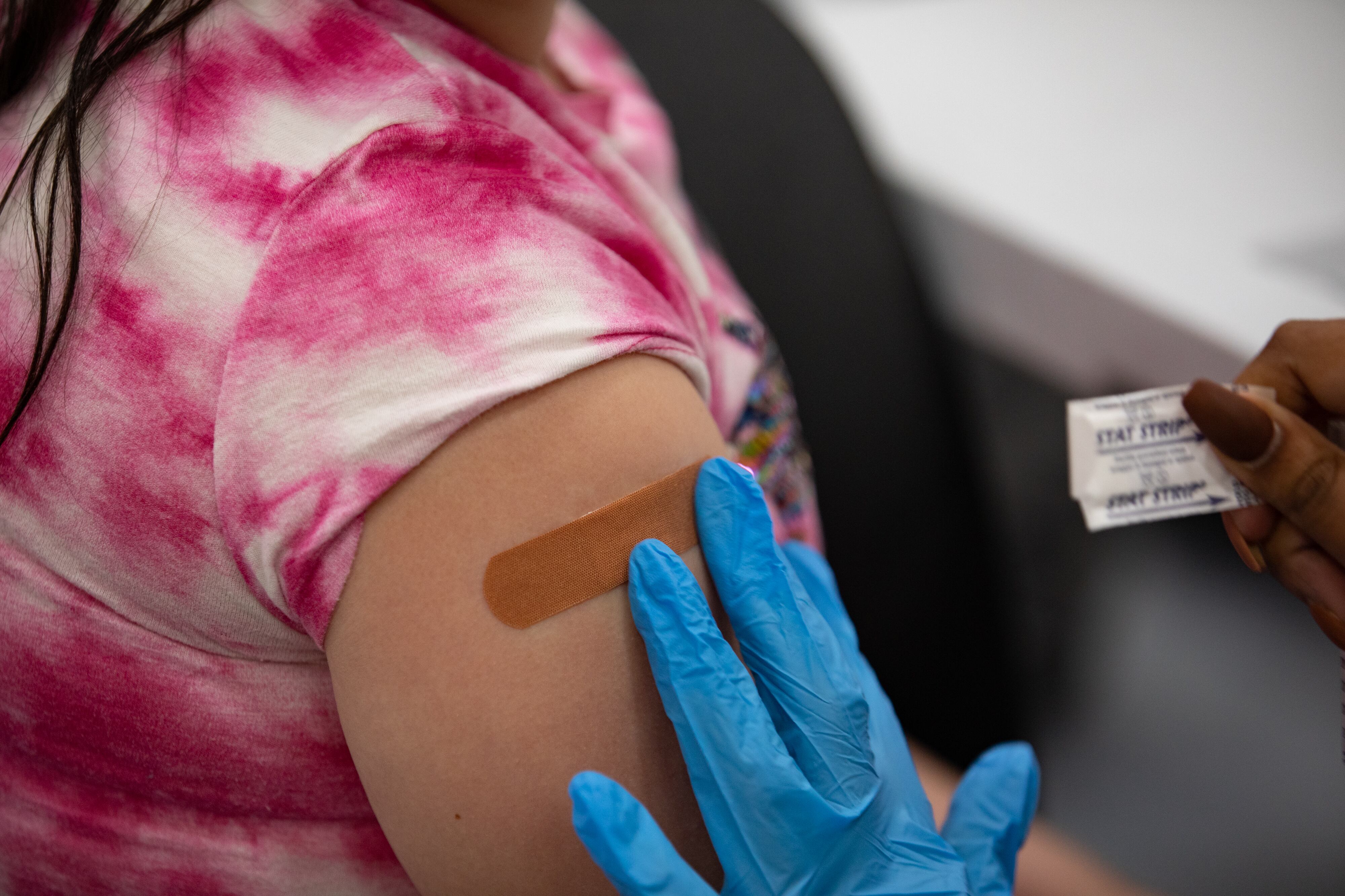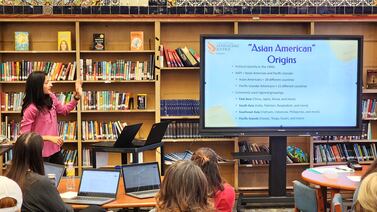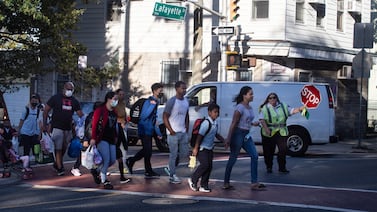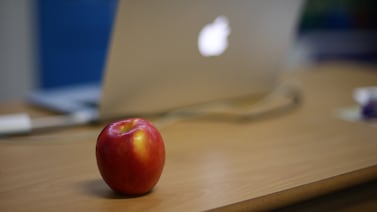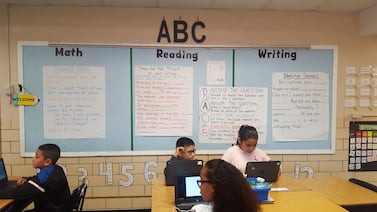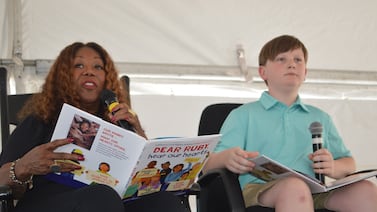Sign up for Chalkbeat Chicago’s free daily newsletter to keep up with the city’s public school system and statewide education policy.
Nicole Abreu’s daughter Alexis is excited about starting sixth grade at Friedrich L. Jahn Elementary School next week. It will be the medically fragile 12-year-old’s first time back to school in person after being homeschooled last year and she can’t wait to meet other kids.
But her mom is concerned that Chicago Public Schools had yet to announce COVID-19 guidance when the start of school is only a few days away.
“Do kids even still have to report if they have COVID? Is there a quarantine period?” said Abreu. “It is unsettling to be a few days from school and not know.”
Parents like Abreu, who decided to homeschool her immunocompromised daughter and two other children last year, say they have heard little from the district about COVID-19 mitigations for the coming school year.
But during a school board committee meeting Wednesday, Jamie Tully, the district’s director of Health Information and Response, outlined a pared-down approach: The district will no longer do in-school COVID testing, but will provide at-home rapid tests to students and staff when an exposure occurs and ahead of breaks around Halloween, Thanksgiving, and Christmas. Quarantine requirements and care rooms in schools are now gone, but close contacts will be encouraged to mask for 10 days, Tully said. CPS will also continue to collect and report data on cases and vaccinations.
The looser guidelines reflect a shift for Chicago since the height of the pandemic when the district struggled to reopen during the school year 2020-21. Once schools fully reopened during the 2021-22 school year, the district ramped up testing and vaccinating students across the city.
“I think the most important thing that we can communicate, particularly right now around COVID-19, is please stay up-to-date on your vaccinations and stay home when you’re sick,” Tully told board members on Wednesday.
The scaled-down mitigations come as cases are ticking up across the nation and at a time of uncertainty for the city’s public health department after Mayor Brandon Johnson fired Chicago’s Public Health Commissioner Allison Arwady late last Friday. The move seemed abrupt, but Johnson committed to firing Arwady while on the campaign trail, stating that the two have different views on public health.
When the pandemic hit in 2020, the Illinois State Board of Education updated public health guidance for schools on a monthly basis. After federal and state emergency orders were lifted in May, wearing masks, weekly testing, vaccinations, and social distancing were no longer required for students across Illinois.
Coronavirus cases increased in late summer across the country, according to the Centers for Disease Control and Prevention. However, the Illinois Department of Public Health reported last Friday to the CDC that Illinois had a low level for COVID-19 hospital admissions as of the end of July. The department said that it will continue to monitor for COVID-19 data and other respiratory diseases as the fall and winter seasons start.
As of Aug. 15, Chicago Public Schools reported that 85 adults and 11 students have self-reported coronavirus cases.
Students are encouraged to get vaccinated
Chicago is hosting several back-to-school events this week where students can get vaccinated for COVID-19 and required childhood vaccinations for diseases such as measles, mumps, and chickenpox before heading back to classrooms.
As of the end of last school year, around 48% of eligible students had been fully vaccinated against COVID. Those numbers could backslide as they did last year with a new group of incoming kindergarten and pre-K students entering and high school seniors graduating. All ages are eligible for vaccination and boosters.
The federal government announced that an updated COVID vaccine that will target the latest variants responsible for a majority of new cases will be available in the fall.
Chicago shifts away from school-based testing
Last school year, just over 13% of Chicago Public Schools students opted into school-based COVID testing and the district also distributed about 1 million rapid tests.
CPS has 650,000 rapid tests in storage that can be distributed this year, Tully said. The district is asking the Chicago Board of Education to approve a contract with Fisher Scientific worth up to $5 million to purchase 500,000 more at-home COVID tests for students and staff to be distributed based on demand at schools during the 2023-24 school year.
The proposed contract for next school year would be a tiny fraction of the company’s previous contracts with the district to provide COVID testing to students and staff. Publicly-posted invoices show the company billed Chicago Public Schools $62 million from July 2022 to May 2023. The previous school year, the company billed the district $78 million for COVID testing.
In the fall of 2021, the University of Illinois’ Shield testing program was at over 1,700 K-12 schools and tested almost 113,000 school employees and about 900,000 students. The program gave Illinois school districts the ability to test students for the coronavirus by taking a sample of saliva and results would come back in less than 24 hours. The University of Illinois decided to end this COVID-19 testing program in June.
Expert urges schools to take safety measures
In July, the Illinois State Board of Education and the state department of public health adopted CDC guidelines for schools that were updated in May. The guidance says students should stay up-to-date on vaccinations for COVID-19 and other illnesses. When feeling sick, students are encouraged to stay home and schools can use COVID-19 testing to confirm or rule out COVID-19.
Daniel Johnson, a pediatric infectious disease expert at the University of Chicago Comer Children’s Hospital, said schools are a place where children can pick up COVID-19, which they could then share with their households.
“It’s incumbent upon all of us to be thoughtful about how we minimize the risk of getting COVID in a school setting while recognizing the importance of children going to school,” said Johnson “So children to conduct their lives, both socially and educationally, in as much a normal way as they possibly can.”
Johnson recommends that everyone gets vaccinated or get a booster if they have not been vaccinated in the last six months. If a child is sick, they should stay at home and get tested to confirm whether or not they have the coronavirus.
He recommended that schools should have good ventilation to circulate fresh air in classrooms and allow students to wash their hands or use sanitizer.
For immunocompromised children such as Abreu’s daughter Alexis, Johnson said he would recommend that students go to school, but they should be vaccinated.
Parents should encourage children to wear masks in the classroom and parents should tell their schools that they want to be informed if their child is exposed to COVID-19.
“Everything should be done to try and keep children in school and as safe as possible,” Johnson said.
Becky Vevea is the bureau chief for Chalkbeat Chicago. Contact Becky at bvevea@chalkbeat.org.
Samantha Smylie is the state education reporter for Chalkbeat Chicago, covering school districts across the state, legislation, special education, and the state board of education. Contact Samantha at ssmylie@chalkbeat.org.


